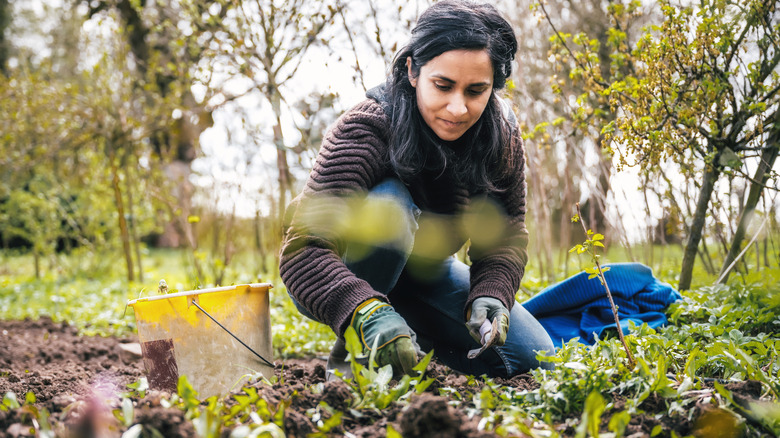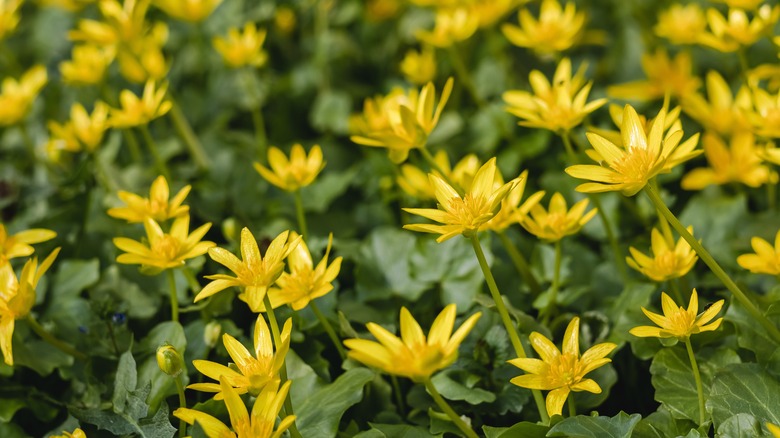Dig Up This Invasive Weed In The Spring To Prevent It From Taking Over
As far as common garden weeds go, some are more problematic and invasive than others. Some weeds will quickly overtake a garden and form a blanket that makes it difficult for native plants to grow. One of the common weeds that you should keep an eye out for is lesser celandine. Lesser celandine, or Ficaria verna, is an herbaceous perennial weed that grows 4 to 12 feet tall and has yellow flowers. This weed will reproduce quickly and wreak havoc on a garden, so it shouldn't be ignored. It spreads through underground tubers and can cause a lot of trouble if you don't take steps to prevent and remove it.
Lesser celandine can be a bit hard to identify because it simply looks like flowers at first glance and bears a striking resemblance to buttercups, which is a non-invasive member of the same Ranunculaceae family. Unlike buttercups, lesser celandine is invasive. You can identify lesser celandine because it has eight to 12 petals while the buttercup just has five. You should aim to get rid of this weed as soon as you notice it so that it doesn't overtake your garden. For a small infestation, you'll need to dig out individual roots manually. However, you may need to take more extensive measures if you already have a large blanket of this weed.
Getting rid of lesser celandine in your garden
To get rid of lesser celandine weeds, you need to identify them early and dig them up by their roots. The best time to catch lesser celandine is during the winter and the beginning of spring. Try to remove them before they bloom. If there's a lot of lesser celandine, you may need to use extensive methods for getting rid of weeds in your garden such as deploying weed-killing herbicides or mowing over them.
Once you've removed the lesser celandine, be sure to monitor the area. Apply additional treatment as needed and work to avoid common weeding mistakes that let them keep growing back. Eliminate any lesser celandine plant parts that remain in the soil and remove them from any gardening tools that you've used as well. Get rid of stems, tubers, and root pieces to help prevent the weed from coming back.

